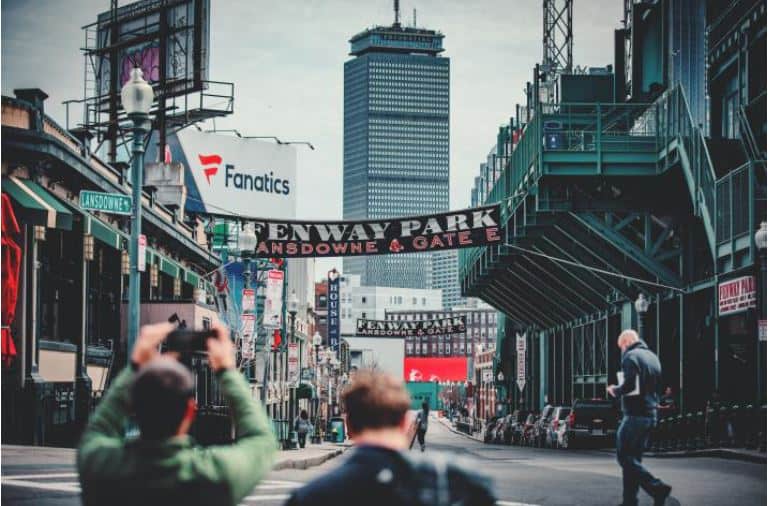Boston has long been a city of firsts. From miracles in medical science, like the first successful organ transplant in 1954 at Brigham & Women’s Hospital, to revolutionizing the art of shaving with the first disposable razor blade manufactured here in 1901 by Gillette, this region has continuously pioneered innovation. Even the area’s construction boom, which last year saw officials approve $5.6 billion of new development, reflects a long list of historic achievements.
For years, the Boston cityscape evolution has told a broader story about the role that buildings and other structures have played in terms of progress and significant cultural, educational, and scientific excellence. A quick glimpse at a few of Boston’s most iconic landmarks maps both the city’s legacy and its larger contributions to American life.
Home to some of the oldest schools in the United States, Boston is one of the nation’s greatest centers of education. But outside its many notable colleges and universities, one institution helped galvanize our country’s focus on learning and public education. Founded in 1848, the Boston Public Library (BPL) is the country’s first major free municipal library. After initially opening in a former schoolhouse in 1854, the BPL relocated to Copley Square in 1895, an important gathering place in the city’s vibrant Back Bay neighborhood. Today, the restored McKim building Library’s main branch is widely recognized as a masterpiece designed by the renowned 19th-century architect Charles Follen McKim.
Beyond education, Boston lays claim to many innovations admired for their ingenuity. For instance, on September 1, 1897, crowds of curious spectators arrived at the Park Street station on Boston Common, eager to be among the first commuters in the country to ride on a then-new mode of transport: the subway. More than 100,000 people would take their very first ride that day, and across the country new systems would soon be built in New York City, Chicago, and Washington D.C., revolutionizing the way people travel for work and leisure.
A few blocks away, on School Street, Old City Hall was home to the Boston city council for more than 100 years, from 1865 to 1969. It remains a testament to the city and its commitment to democracy and self-government. And from a design standpoint, it was one of the first buildings in the French Second Empire style to be built in the United States, spurring the popularity of this unique architectural style within Boston. Many public buildings across the country, including the Old Executive Office Building in Washington, D.C., and city halls in Providence, Baltimore, and Philadelphia, have a similar distinctive design.
To be sure, Greater Boston is rife with history, dating back to the country’s founding. Bunker Hill Monument is a 221-foot granite obelisk, erected in Charlestown to commemorate the Battle of Bunker Hill, one of the first major battles between British and local forces in the American Revolution. The monument is viewable from another landmark, the Zakim Bridge – a cable-stayed bridge crossing the Charles River – designed in part to echo the striking tower, which was completed in 1843.
On the cultural side, the first World Series was played on Huntington Avenue, on what is now Northeastern University campus. However, one of the most iconic symbols of America’s Pastime is Fenway Park. Built in 1912, Fenway Park is the oldest active Major League baseball park in the United States and one of only two remaining ballparks constructed during the sport’s early 20th century “Golden Age.” Designed by architect James E. McLaughlin, this landmark stadium’s enduring architectural and cultural significance has earned it a place on the National Register of Historic Places. It remains one of the most popular tourist destinations in New England.
It is also worth considering the Prudential Center, which was designed by Charles Luckman Associates. When completed in 1964, the 52-story, 749-foot skyscraper became Boston’s tallest building. Both “the Pru” and the nearby John Hancock Tower, which opened in 1976, helped transform the Boston skyline, overhauling the city’s reputation from a regional consumer hub to a national epicenter.
Of course, Boston’s architectural heritage can be traced to every corner of the city, from Beacon Hill to the Back Bay, from the North End to the South End and the West End. Just take a stroll through these distinctive neighborhoods and you’ll see the work of classically trained architects who learned their craft through apprenticeships with European masters. However, when M.I.T. began the first professional training program for architects in 1865, the foundation for future US architects was laid, allowing a more American aesthetic to flourish.
From education to culture, when it comes to design, Boston casts a long shadow. And today, that legacy continues with the next generation of construction featuring some of the world’s most cutting-edge corporate and residential buildings. Boston’s ongoing transformation continues to play an outsized role both nationally and globally, with the city’s construction industry playing an essential role.
